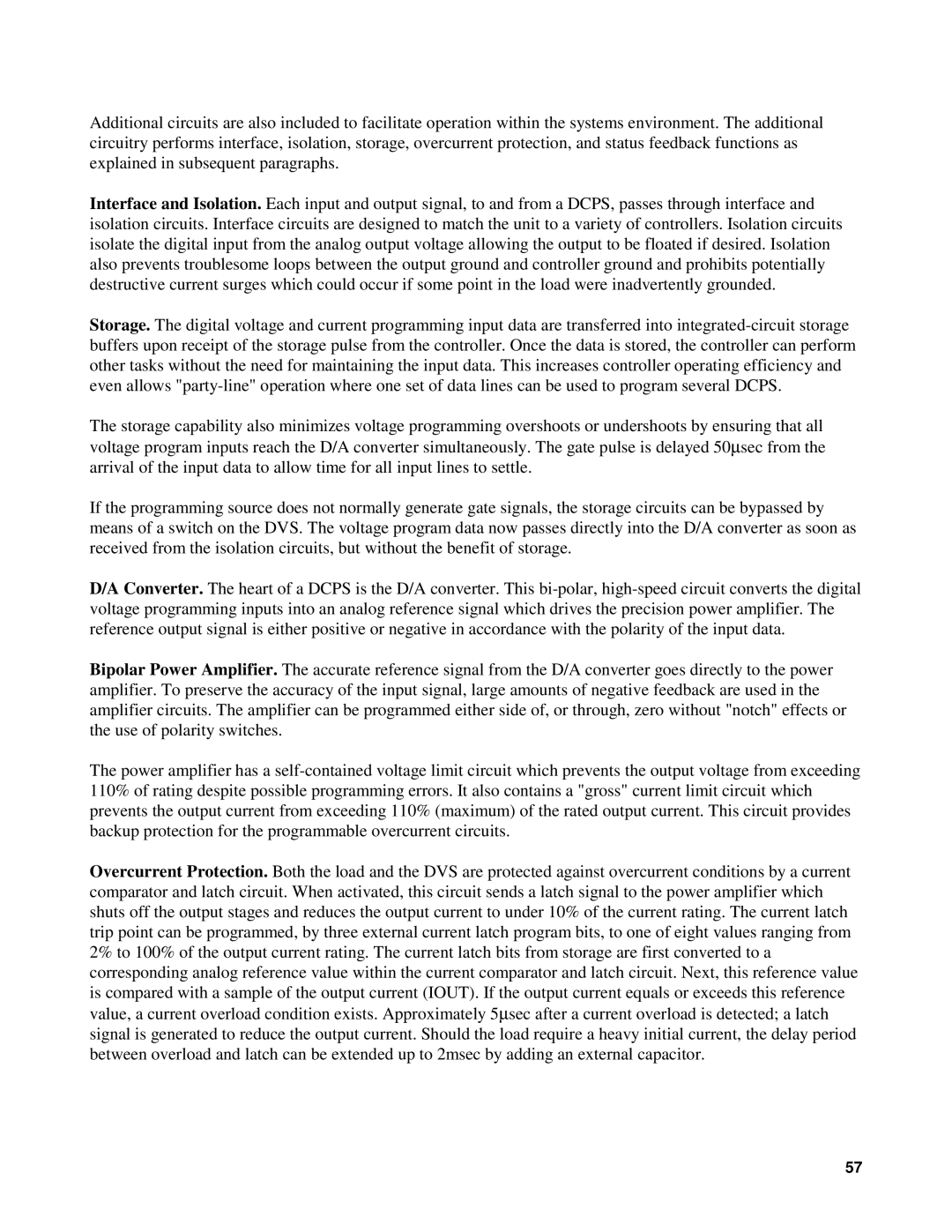Additional circuits are also included to facilitate operation within the systems environment. The additional circuitry performs interface, isolation, storage, overcurrent protection, and status feedback functions as explained in subsequent paragraphs.
Interface and Isolation. Each input and output signal, to and from a DCPS, passes through interface and isolation circuits. Interface circuits are designed to match the unit to a variety of controllers. Isolation circuits isolate the digital input from the analog output voltage allowing the output to be floated if desired. Isolation also prevents troublesome loops between the output ground and controller ground and prohibits potentially destructive current surges which could occur if some point in the load were inadvertently grounded.
Storage. The digital voltage and current programming input data are transferred into
The storage capability also minimizes voltage programming overshoots or undershoots by ensuring that all voltage program inputs reach the D/A converter simultaneously. The gate pulse is delayed 50∝ sec from the arrival of the input data to allow time for all input lines to settle.
If the programming source does not normally generate gate signals, the storage circuits can be bypassed by means of a switch on the DVS. The voltage program data now passes directly into the D/A converter as soon as received from the isolation circuits, but without the benefit of storage.
D/A Converter. The heart of a DCPS is the D/A converter. This
Bipolar Power Amplifier. The accurate reference signal from the D/A converter goes directly to the power amplifier. To preserve the accuracy of the input signal, large amounts of negative feedback are used in the amplifier circuits. The amplifier can be programmed either side of, or through, zero without "notch" effects or the use of polarity switches.
The power amplifier has a
Overcurrent Protection. Both the load and the DVS are protected against overcurrent conditions by a current comparator and latch circuit. When activated, this circuit sends a latch signal to the power amplifier which shuts off the output stages and reduces the output current to under 10% of the current rating. The current latch trip point can be programmed, by three external current latch program bits, to one of eight values ranging from 2% to 100% of the output current rating. The current latch bits from storage are first converted to a corresponding analog reference value within the current comparator and latch circuit. Next, this reference value is compared with a sample of the output current (IOUT). If the output current equals or exceeds this reference value, a current overload condition exists. Approximately 5∝ sec after a current overload is detected; a latch signal is generated to reduce the output current. Should the load require a heavy initial current, the delay period between overload and latch can be extended up to 2msec by adding an external capacitor.
57
